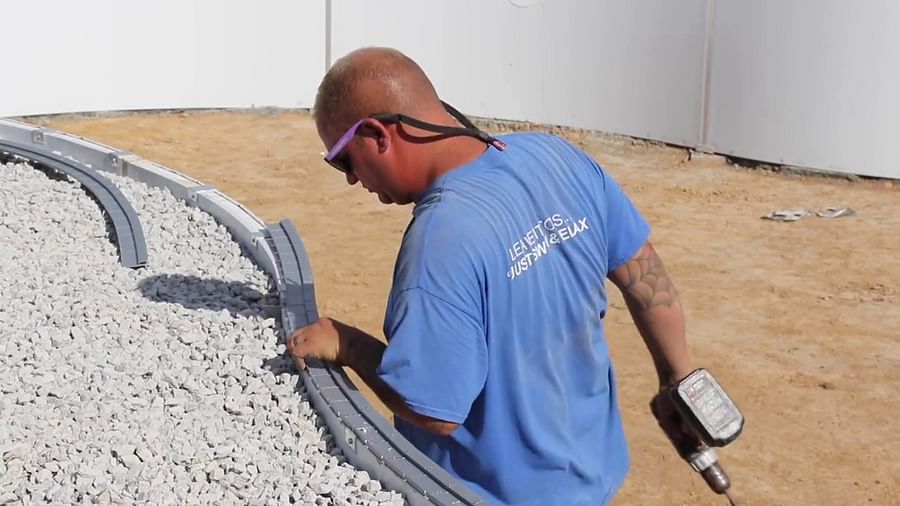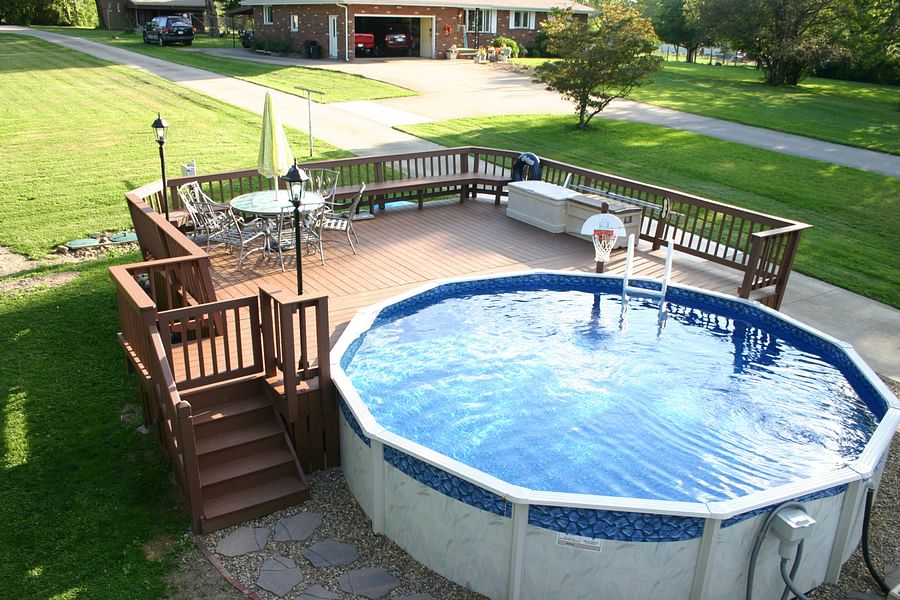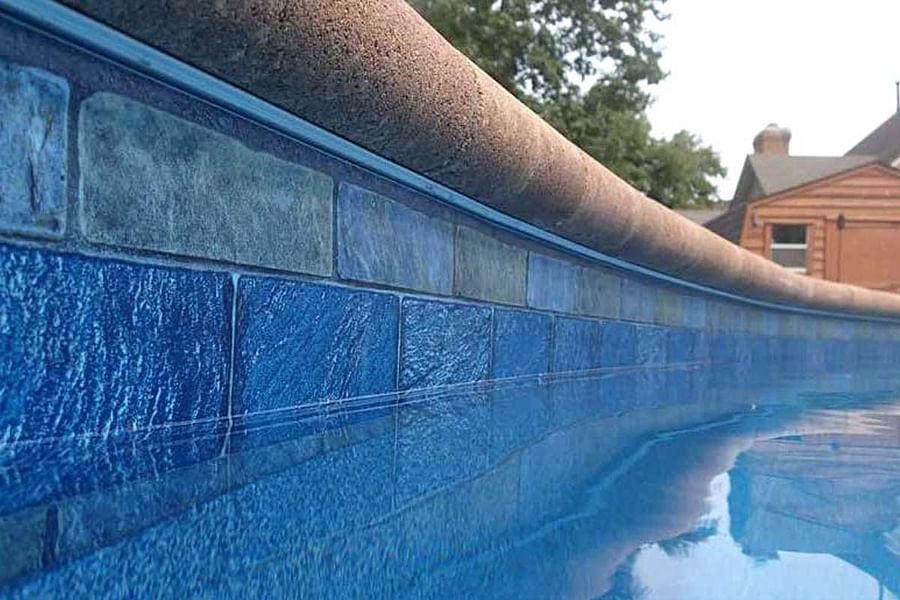Navigating the World of Inground Pool Liner Replacement

🌊 Dive into the world of inground pool liner replacement with us, where we'll explore the depths of this watery adventure and uncover the secrets of transforming your pool from drab to fab!
Like a synchronized swimming routine, this process requires precision, style, and a touch of humor to keep you afloat.
Let's make a splash as we unravel the mysteries of inground pool liner replacement!

When it comes to the health and longevity of your inground pool, one aspect that often gets overlooked is the pool liner. Yet, it plays a pivotal role in maintaining the pool's structural integrity and aesthetic appeal. Understanding the importance of inground pool liner replacement is crucial for every pool owner.

Moreover, a well-maintained liner can improve the efficiency of your pool's filtration and circulation system. This is because a smooth, clean liner allows water to flow more freely, reducing strain on your pool's equipment.
While DIY inground pool liner replacement can be a tempting cost-saving measure, it's important to remember that incorrect installation can lead to more problems. From ensuring a perfect fit to handling the delicate liner material, pool liner replacement is a task best left to the professionals.
In conclusion, regular pool liner replacement is a vital part of pool maintenance that ensures your pool remains safe, efficient, and visually appealing. So, whether you're conducting an inground pool inspection or just looking for ways to spruce up your collection, don't overlook the importance of the pool liner.
Choosing the exemplary pool liner replacement service can feel like navigating a maze. But don't worry; we're here to guide you through the process. Here are some key factors to consider when making your choice.

In summary, choosing the exemplary pool liner replacement service is about more than just cost. It's about finding a service that combines experience, expertise, customer service, and environmental responsibility. With the exemplary service, you can ensure your pool liner is installed correctly and will last for years.
Deciding between a DIY inground pool liner replacement and hiring a professional service can be tricky. Both options come with their own set of pros and cons. Let's dive into the details to help you make an informed decision.
DIY Inground Pool Liner Replacement
Going the DIY route can be attractive for those who enjoy hands-on projects and are looking to save on the inground pool liner replacement cost. You can tackle the task yourself with a detailed pool liner installation guide, such as our guides on how to install a beaded pool liner or how to install an expandable pool liner.

However, DIY projects come with challenges. You'll need to understand swimming pool liner repair and the right tools. Mistakes can lead to leaks, wrinkles, or damage to the liner, which could cost more in the long run.
Professional Inground Pool Liner Replacement

If you've decided to embark on the DIY journey of inground pool liner replacement, this step-by-step guide will walk you through installing a beaded pool liner. Beaded pool liners are famous due to their ease of installation and the neat finish. Here's how to get started:
Step 1: Gather Your Tools
Before you begin, ensure you have all the necessary tools. You'll need a pool liner, bead receiver, utility knife, and a shop vacuum.

Step 2: Prepare the Pool
Drain your pool thoroughly and remove any debris. Inspect the pool surface for any sharp objects that could damage the liner.

Step 3: Install the Bead Receiver
Attach the bead receiver along the top edge of your pool wall. This is where the beaded pool liner will sit.

Step 4: Insert the Liner
Spread the liner in the pool and carefully insert the bead into the receiver. Work around the pool, ensuring the liner is smooth and wrinkle-free.

Step 5: Remove Air
Use a shop vacuum to remove air between the liner and the pool wall. This helps the liner fit snugly against the pool surface.

Step 6: Fill the Pool
Start filling your pool with water. Adjustadjust the liner as nas the collection fills eeded to ensure it remains smooth.

And there you have it! With these steps, you can suAdjustl liner. Remember, paas the collection fills tience is critical during this process. If you encounter any issues, don't hesitate to seek advice from pool maintenance experts or consider hiring a professional service.
After all, the goal is to ensure your pool is in top condition for those refreshing dips!
Now, let's dive into the world of expandable pool liners. An expandable liner is your best bet to give your pool a deeper end or a unique shape. Here are some practical tips for installing an expandable pool liner.
Step 1: Gather Your Supplies
Like the beaded liner, you'll need a few essential tools. These include an expandable pool liner, a utility knife, a shop vacuum, and a lock.

Step 2: Prepare Your Pool
Drain your pool thoroughly, remove debris, and inspect for sharp objects. This step is crucial to prevent any damage to your new liner.
Step 3: Install the Liner
Spread out the liner in the pool, ensuring it reaches all corners. Unlike beaded liners, expandable liners are designed to stretch, so don't worry if it seems too big at first.

Step 4: Secure the Liner
Use the liner lock to secure the liner at the top of the pool wall. This will hold the liner in place as you fill the pool with water.
Step 5: Remove Air and Adjust the Liner
Use a shop vacuum to remove air between the liner and the pool wall. Adjust the liner to ensure it fits perfectly as the pool fills with water.
And voila! You've successfully installed an expandable pool liner. Remember, this process requires patience and precision. If you're unsure about any step, don't hesitate to consult with a pool maintenance expert or consider hiring the best pool liner replacement services. After all, your goal is to create a safe and enjoyable swimming environment.
Next, we'll discuss some common issues to consider during inground pool liner replacement. Stay tuned!
As you navigate the DIY inground pool liner replacement world, you must be aware of common issues that could arise. These problems, if not addressed promptly, can lead to more significant issues, including damage to your pool and costly repairs.
One of the most common issues during inground pool liner replacement is improper fitting. This can occur if the liner is not measured correctly or if it's not installed properly. An ill-fitting liner can lead to wrinkles, leaks, and even premature wear and tear. To avoid this, following the pool liner installation guide must be followed meticulously, and ensure the liner is smooth and secure before filling the pool with water.

Another common issue is damage to the liner during installation. Sharp objects in the pool, such as stones or debris, can puncture the liner, leading to leaks. Conducting a thorough inground pool inspection before installation can help prevent this problem.
Lastly, many pool owners underestimate the importance of water chemistry during swimming pool liner repair or replacement. Incorrect water balance can cause the liner to fade, crack, or become brittle. Regular pool maintenance and testing of your pool's water chemistry can help maintain the longevity of your liner.

While inground pool liner replacement can be a DIY project, it's not without challenges. Consulting with a professional is always best if you're unsure about any aspect of the process. Remember, your goal is to ensure a safe and enjoyable swimming experience; a well-maintained pool liner is significant.
Now that we've explored the intricacies of DIY inground pool liner replacement and the common issues that can arise let's dive into the cost aspect. Understanding the financial implications of an inground pool liner replacement can help you budget effectively and make informed decisions.
Inground pool liner replacement costs can vary widely based on several factors. These include the size and shape of your pool, the type of liner you choose, and whether you opt for a DIY approach or hire a professional service. You can expect to spend between $1,000 and $2,500 on average for the liner. Beaded and expandable pool liners tend to be on the higher end of this range due to their superior durability and aesthetic appeal.

Ultimately, the choice between DIY and professional service depends on your comfort level, budget, and time constraints. Whichever route you choose, remember that maintaining a well-functioning pool liner is essential for a safe and enjoyable swimming experience.
Now that you're familiar with the costs and processes involved in replacing your inground pool liner, let's focus on your liner's ongoing care and repair. Regular maintenance is critical to extending the life of your pool liner and ensuring a safe, enjoyable swim.


As we end our journey through the sea of inground pool liner replacement, it's clear that this is no ordinary swim in the pool. It's a grand opportunity to revitalize your backyard oasis and make a splash with your unique style. So, remember to dive in confidently, keep your sense of humor afloat, and embrace the refreshing transformation that awaits you.
As the saying goes, "The waves of change may be intimidating, but they also bring the tides of rejuvenation." Happy swimming!
Post a comment